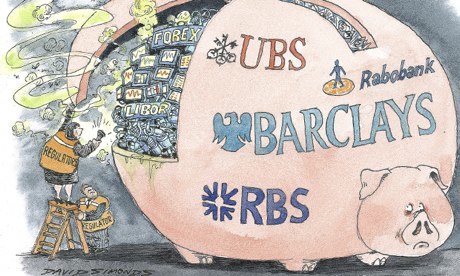
Fixing The Fix
Last week’s furore and fines over the manipulation of FX fixings (unfortunate name!) is the most recent of a series of scandals related to financial benchmarks. The focus of the press coverage has understandably been on the venality of the traders involved and outrage over their deliberate attempts to game the system for personal advantage.
 Valuation Risk Event - More Video and Panelist Content
Valuation Risk Event - More Video and Panelist Content
Valuation Issues Overlooked
In all of this, however, one crucially important point seems to have been overlooked. Benchmarks and reference rates underlie many valuation methodologies and play a critical role in the production of prices for a wide range of financial products, from derivative contracts, to structured products, fixed income instruments and funds (exchange traded or otherwise).
The valuations of many derivative contracts and structured products are based on a specified reference rate, be it an FX fixing, an interbank offered rate or swap or a widely used benchmark index. The prices of illiquid fixed income securities are frequently derived using a present value approach, discounted based on a benchmark yield curve. The Net Asset Values of funds are subsequently created using these prices.
It is clear, therefore, that calling into question the veracity and reliability of these underlying benchmarks also compromises the host of downstream valuations produced using them. It is impossible to quantify this impact, but over the period of time that reference rates and curves were manipulated, many millions of prices used for NAV calculations, client reporting, performance measurement and risk management must also be discredited.
Regulators Wake Up
The press may have preferred to focus on the lurid trader chat and naked greed exhibited by the perpetrators rather than this bigger picture, but the regulatory authorities, in an unusual display of (albeit after the fact!) prescience, have clearly woken up to the problem.
Last year IOSCO, co-operating with the Financial Stability Board, produced a set of rules to reform benchmarks. These rules covered governance, the quality of both the data product and the methodology deployed, and subsequent accountability of the benchmark administrators. The rules are aligned at the regional level, with ESMA/EBA producing their own version for the markets they oversee.
In addition, the recent Fair and Efficient Market Review instituted by the UK Financial Conduct Authority into the UK fixed income, currency and commodity markets, has an explicit section devoted to the submission and review of benchmarks.
Reform & New Entries
In July of this year, the FSB reported on the progress of the adoption of these rules by benchmark administrators and providers. The report clearly illustrates two major areas of impact on the old benchmark setting regime.
Firstly, the established players (index and data providers such as FTSE, Markit, MSCI and WM Company) have been forced to reform their processes and report back on what they have done to meet these new rules. They have identified that they need to be seen to be adopting these if they want to be credible and stay in business.
Second, there has been some new entrants into the business picking up administrative duties for some benchmarks which have been most damaged. ICE Benchmark Administration has reportedly invested $15m in its business which has recently assumed responsibility for LIBOR, ISDAFix and the LBMA Gold Price.
Implications for Valuation Professionals
So what are the implications of all this change and reform for valuation professionals? The strongest conclusion is that it is simply not enough to blindly trust the benchmarks any more. If using benchmark prices, indices, curves or reference rates – and it is difficult to think of any valuation activity where one would not – then it behoves the user to fully understand and be aware of the issues surrounding their production and oversight and how they impact the value being placed on an asset.
It hasn’t happened yet, but in the future, if benchmarks are seen to have been misstated (deliberately or as a result of error) then valuation users may be required to go back and revise pricing for the instruments on which they depended.